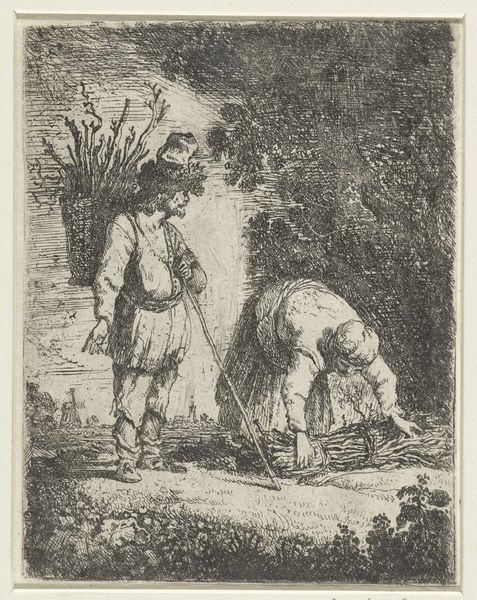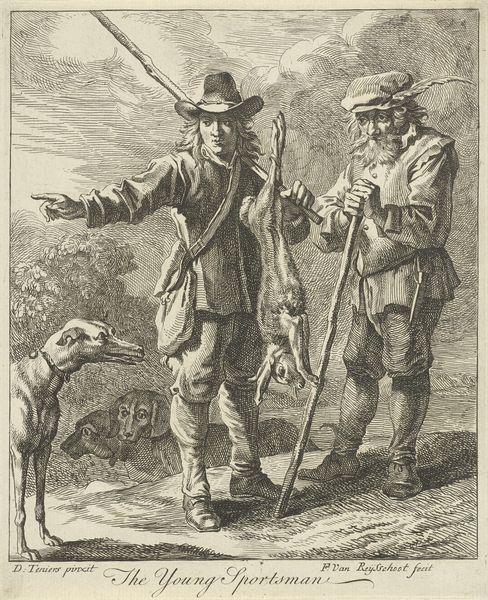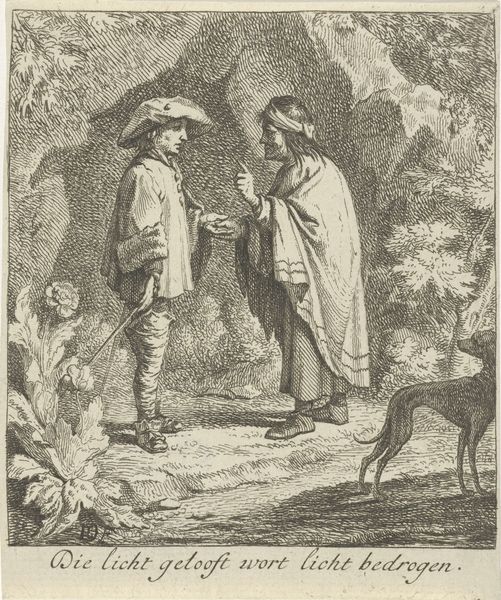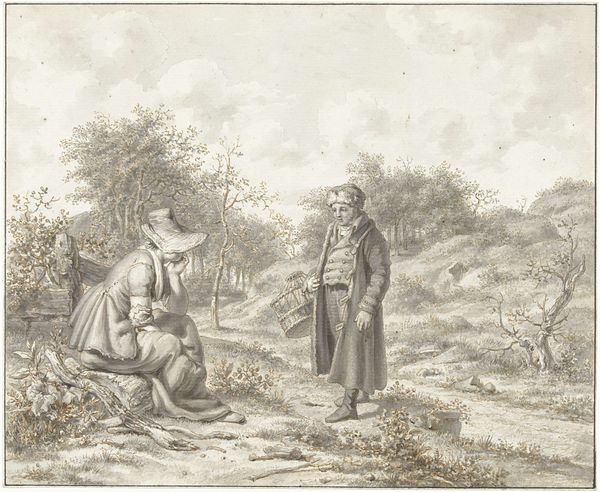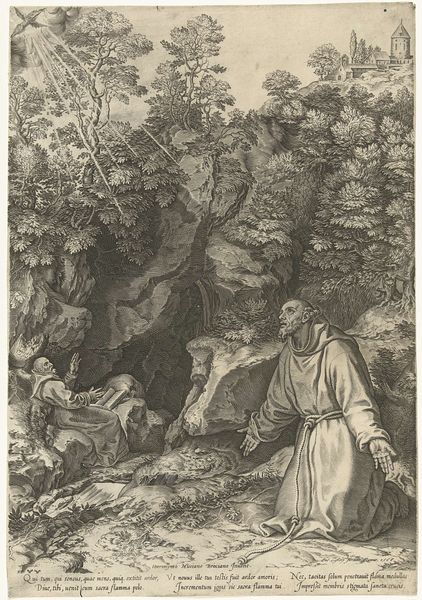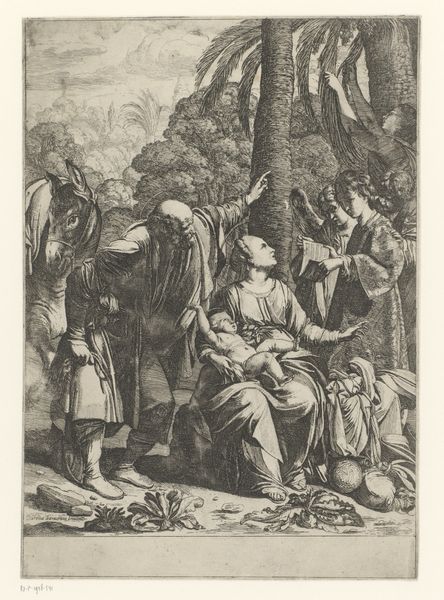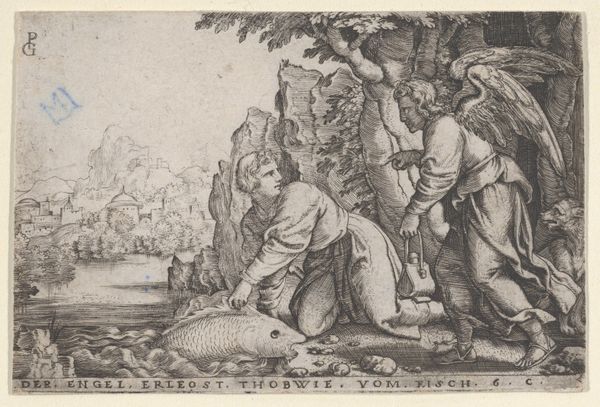
Twee boeren in gesprek: Ieder moet zijn eigen tuintje wieden 1588 - 1592
0:00
0:00
drawing, print, engraving
#
drawing
# print
#
old engraving style
#
landscape
#
figuration
#
genre-painting
#
engraving
Dimensions: height 259 mm, width 200 mm
Copyright: Rijks Museum: Open Domain
Curator: Today we're looking at an engraving by Jacob Matham, made sometime between 1588 and 1592. Its title is "Twee boeren in gesprek: Ieder moet zijn eigen tuintje wieden", or "Two Peasants Conversing: Each must weed their own garden." Editor: It's a stark image, immediately grabbing attention with its highly contrasted rendering and detailed figures against a softer, fading landscape. There’s a strong sense of imbalance in the composition, with the imposing figure on the right dominating the kneeling one. Curator: Precisely. Matham’s skillful use of line work and tonal variation creates a compelling dynamic. Notice the stark difference in textures – the peasant’s worn clothing versus the almost aggressive foliage surrounding them. These visual elements guide the viewer’s eye, orchestrating an emotional encounter with the subject. Editor: It feels symbolic. Given the era and the subject, could the 'garden' be a metaphor? The looming figure wielding a shovel—could this be a representation of authority, or societal expectation perhaps? The kneeling peasant seems burdened, pointing towards weeds, perhaps a visual representation of earthly or personal burdens? Curator: Certainly. The artist makes deliberate use of imagery with a possible meaning on many levels. Peasant scenes were commonly allegorical and frequently expressed popular proverbs and sentiments. One man stands tall, gesturing to another. The first verse implies that those who attend to their duties will earn respect and can expect reciprocity, while the second seems to discourage meddling where one is not free of blemish or fault themselves. Editor: So it's not simply an observed interaction, but perhaps a pointed comment on societal responsibilities. There is a compelling dialogue happening. I mean the faces alone, each so expressive and meticulously rendered, almost carry an entire narrative on their own. There is the feeling that something momentous is transpiring. Curator: And that is the magic of Matham’s print, isn't it? The intertwining of form and allegory leaves one questioning its social and psychological layers, thus sparking ongoing meaning long after the physical object came to life. Editor: It seems to demand a look beneath the surface. Curator: Indeed, revealing how artistic form enhances the symbolic essence of the subject in surprising and enriching ways.
Comments
No comments
Be the first to comment and join the conversation on the ultimate creative platform.
